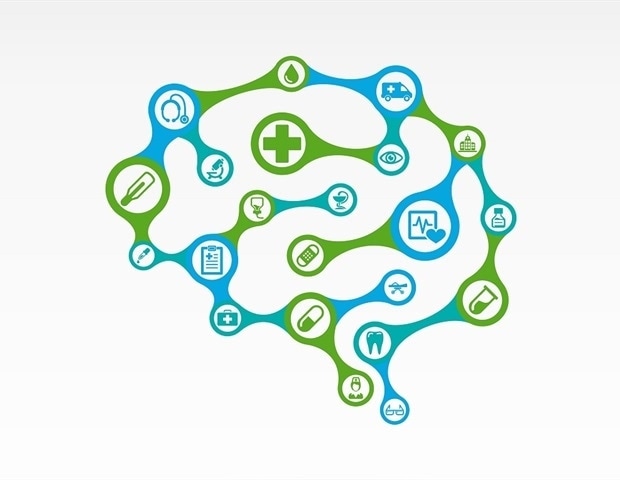In the United States, 16.1 million adults suffer from severe depressive disorder, causing an annual cost of $210 billion. While the primary symptoms of depression are psychological, scientists and doctors have recognized that depression is a complex disease with physical effects on the whole body. For example, measuring markers of cell metabolism has become an important approach to investigating mental illnesses and developing new ways to diagnose, treat, and prevent them.
Researchers at the University of California San Diego School of Medicine have advanced this work in a new study, uncovering a link between cell metabolism and depression. They found that people with depression and suicidal thoughts had detectable connections in their blood, which could help in identifying individuals at higher risk for suicide. The researchers also found gender-specific differences in how depression affects cell metabolism.
The results were published on December 15, 2023 in the journal Translational Psychiatry and could contribute to personalizing mental health care and potentially identifying new targets for future medications.
Psychological disorders like depression have effects and drivers that go far beyond the brain. Until about ten years ago, it was difficult to investigate how the chemistry of the entire body influences our behavior and mental state, but modern technologies, such as metabolomics, help us listen to the conversations of cells in their native language, biochemistry,”
Robert Naviaux, MD, PhD, Professor in the Department of Medicine, Pediatrics, and Pathology at UC San Diego School of Medicine
While many people with depression feel better with psychotherapy and medication, some individuals have treatment-resistant depression, meaning that treatment has little or no impact. Most patients with treatment-resistant depression experience suicidal thoughts, and up to 30% make at least one suicide attempt in their lifetime.
“We are witnessing a significant increase in middle-age mortality in the United States, and the elevated suicide rate is one of many factors driving this trend,” Naviaux said. “Tools that could help us stratify people based on their suicide risk could help us save lives.”
The researchers analyzed the blood of 99 study participants with treatment-resistant depression and suicidal thoughts, as well as an equal number of healthy controls. Among the hundreds of different biochemicals circulating in the blood of these individuals, they found that five could be used as biomarkers to classify patients with treatment-resistant depression and suicidal thoughts. However, the five that could be used were different for men and women.
“If we have 100 people who either have no depression or suffer from depression and suicidal thoughts, we could correctly identify 85-90 of the most vulnerable individuals based on five metabolites in men and an additional five metabolites in women,” said Naviaux. “This could be important for diagnosis, but it also opens up a broader discussion in this field about what actually leads to these metabolic changes.”
While there were distinct differences in blood metabolism between men and women, some metabolic markers for suicidal thoughts were the same for both genders. These included biomarkers for mitochondrial dysfunction, which occurs when the energy-producing structures of our cells fail.
“Mitochondria are among the most important structures of our cells, and altered mitochondrial functions occur in a variety of human diseases,” Naviaux added.
Mitochondria produce ATP, the primary energy currency of all cells. ATP is also an important molecule for cell-to-cell communication, and the researchers believe that this function is most disrupted in individuals with suicidal thoughts.
“If ATP is inside the cell, it’s like a power source, but outside the cell, it’s a danger signal. This signal activates dozens of protective pathways in response to environmental stresses,” Naviaux said. “We believe that suicide attempts could actually be part of a larger physiological impulse to stop a stress response that has become intolerable at the cellular level.”
Since some of the metabolic deficiencies identified in the study are due to compounds available as dietary supplements, such as folic acid and carnitine, the researchers are interested in exploring the possibility of personalized treatment for depression with these compounds to help close the metabolic gaps needed for recovery. Naviaux hastened to add that these dietary supplements are not cures.
“None of these metabolites are a magic bullet that can completely reverse a person’s depression,” Naviaux said. “However, our results show us that we may be able to do things to steer metabolism in the right direction so that patients respond better to treatment, and in the context of suicide, this could be just enough to prevent people from crossing that threshold.”
The research not only suggests a new approach to personalized medicine against depression but could also help scientists discover new drugs that target mitochondrial dysfunction, which could have far-reaching implications for human health overall.
“Many chronic diseases are associated with depression because it can be extremely stressful to deal with an illness for years,” Naviaux said. “If we find ways to treat depression and suicidal thoughts at the metabolic level, we might also be able to improve outcomes for the many diseases that lead to depression. This is not the case for many chronic diseases such as post-traumatic stress disorder and chronic fatigue syndrome, which are not life-threatening unless they lead to suicidal thoughts and actions. If metabolomics can be used to identify the most vulnerable individuals, it might ultimately help us save more lives.”
Co-authors include: Jane C. Naviaux, Lin Wang, Kefeng Li, Jonathan M. Monk, and Sai Sachin Lingampelly from UC San Diego, Lisa A. Pan, Anna Maria Segreti, Kaitlyn Bloom, Jerry Vockley, David N. Finegold, and David G. Peters from the University of Pittsburgh School of Medicine and Mark A. Tarnopolsky from McMaster University.
Source:
University of California – San Diego
Journal Reference:
Pan, LA, et al. (2023). Metabolomic characteristics of treatment-resistant severe depressive disorder with suicidal thoughts. Translational Psychiatry. doi.org/10.1038/s41398-023-02696-9.


